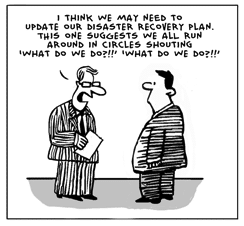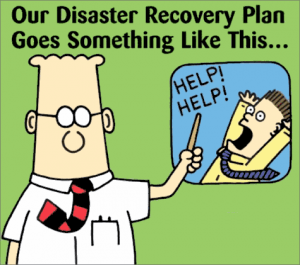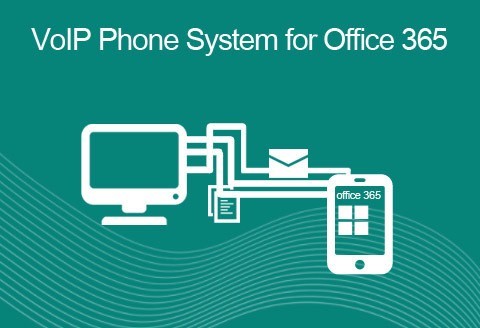For many businesses, large or small, technology has been proven to boost productivity and make processing information easier and easier. And for many businesses, this reliance on tech can make facing a natural disaster a rude awakening.

In Florida, where our main headquarters is located, these natural disasters usually consist of category 3+ hurricanes with a small chance of flooding in a moments notice – giving us the “incentive” to take our information security and disaster recovery seriously. Wherever your from, however, this type of planning can save your business’ time, money, and even its life. Here are some things you should keep in mind:
1) As always, the key focus here is to develop a contingency plan. This plan should not only detail what management personnel should do in the case of an emergency but how and when. For a reference guide in making such a contingency plan, check out the N.I.S.T. and their whitepaper Special Publication 800-34 detailing what a business should do before the cost of downtime outweighs the cost to recover.
2) Whatever Disaster Recovery Plan you come up with, remember: always assess the dangers that may occur in your geographical area. This involves stepping back and determining the protection your company needs from an external and internal viewpoint. Always weigh the benefits of having a strong insurance policy and determine where pricey tech should be located. For example, a business within a heavily flooded area would think twice before placing their server room in their office’s basement just as a business with frequent blackouts would invest in consistent backup logs and generators.
3) In some cases, even the best of planners cannot foresee a disaster that could cripple or maim business operations. In these instances, however, you can still take precautionary measures to secure and recover your equipment until events have passed. In the case of a large-scale disaster, plan a business strategy that will determine if and when you can get back up and running – this involves letting your clients know if their services will or will not continue. Also, plan an alternate site location for your tech to be stored and secured – both from the elements and looters who can often take advantage of disabled and vulnerable businesses.
4) Above all else, make sure your employees have adequate preparation in the case of a disaster. Many businesses often overlook their workforce in times of plenty, but when all else fails, your employees can be the ones to bring your business back to its feet. Employ safety guidelines and develop a handbook especially in routine seasons when storms and temperature changes increase. All the effort you put into protecting your employees and your resources is what makes your business stronger and disaster recovery much more efficient.
For 4 Corner IT support pertaining to disaster recovery, check out our disaster recovery services page or contact us to talk to one of our business and technical administrators.







